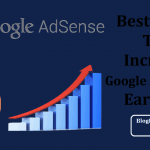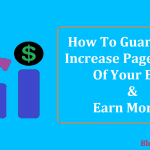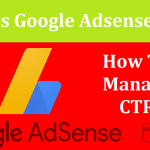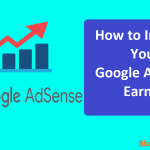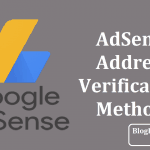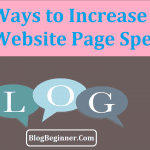CPC, or cost-per-click, is the amount of money you make for every click made on your ads. Although you cannot directly choose which ads appear on your site, you can make a few adjustments to influence Google to place these high-paying ads on your site. Here are a few ways on how you can do it.
Contents In Page
1. Get quality traffic
Google AdSense would give you a CPC depending on the quality of your traffic. This quality is measured by factors such as time spent by users on the website, number of scrolls made, number of pages visited, and the CTR of AdSense ads in your site.
This is why you need visitors that are genuinely interested on your niche. You do not want visitors who would click your ads or social media links but change their minds because your content is not what they are looking for. These types of visitors would not browse through more pages and are even more likely to ignore the ads in your site.
This means that you have to take into account on how you are promoting your website. It is an obvious fact that your promotion campaigns would get traffic to your site. Whether these are direct ads, social media promotion, organic shares, or links, people will click those links.
But, the increased inbound traffic does not mean that your promotion campaigns align with your niche. If you are just promoting randomly and placing ads wherever possible, you are more likely to increase your bounce rate.
When Google sees this through their analytics, your website is likely to have a poor search engine ranking and given a lower priority for high CPC ads.
2. Use high-paying keywords
It does not matter what niche you are targeting. Any niche has keywords that advertisers bid for to use in their advertisements. The bidding can drive popular keywords up and this would translate to better CPC rates.
You would have to do your research on these keywords. From what you find, you don’t have to choose the one with the highest rank.
It is best to use keywords that have a more organic fit to your niche. Google’s algorithm takes into account the semantics and the context of your content. If you naturally use these high-priced keywords, you are more likely to get the high CPC ads on the relevant page.
3. Focus on your niche
Google’s algorithm sees domains hyper-focused on a single niche as high-quality sites. These sites would naturally contain pages focused on different keywords. But, overall, the website is focused on specific keywords on all of its pages.
For example, a fitness website can have topics on exercises, injury prevention, injury management, recovery, and supplements. But, each of its pages would have keywords pertaining to its niche – “fitness”.
Google sees these sites as authorities in their niche. The advertisers are their customers and, like any business, they would give the best spots to their best customers (a.k.a. high-paying customers). And, the focus of these sites on their niche means that their visitors are more likely to buy the products being promoted by the relevant ads.
4. Block ads or categories that pay low CPC
Some advertisers and categories just pay less than the rest for every click made on their ads. You can block these advertisers on the “Block & Allow” page found on the Google AdSense interface. You can check the column “% Earnings (last 30 days)” and see which of these are giving you low revenue.
However, there is a limit on how much advertisers will pay. This is why you have to keep in mind that you cannot endlessly optimize your ads for CPC. Generally, you only want to eliminate those that are paying less than 5% of your earnings.
5. Don’t put too much ads on your website
AdSense lets you place up to three ad blocks on a single page. But, this does not mean that you have to use all of these blocks in every page on your site.
Google allocates ads according to the quality and length of your content. If your content does not warrant Google to place quality advertisements on the page, you are more likely to get general and irrelevant ads.
This can hurt your site in two ways. First, it can decrease your average click-through rates as your visitors are less likely to click ads.
Second, it can decrease user-experience, which will probably increase your site’s bounce rate. Either way, Google’s search and AdSense algorithm would see this and influence how they place future ads on your site.
This is also true if you are using other methods in placing ads on your site. You would have to consider ALL ad placements and limit it to ensure good user experience for your visitors. Ideally, a website should follow the average advertisement to word count ratio of around 1 to 2 ads for every 300 words.
6. Make your website mobile-friendly
There are certain ads and niches that offer higher cost-per-click when used on mobile. Take advantage of this by creating a responsive web design or having a dedicated mobile site. Google will recognize this feature and assign these ads to your site.
7. Use text-and-image or video format ads
Videos and text-and-image format ads are more effective in catching people’s attention. Because of this, these ads would cost more per click for advertisers. Focus your ad placements for these formats for a higher CPC for each ad placement.
8. Effective ad placement
The first ad block Google detects would usually have the high CPC ads. These are prime spots due to the slot having a higher load priority.
You would have to test the best placement for the prioritized ad block. There would be different factors that influence when your readers will click on these pages.
Generally, readers are less likely to click on header ads since these would take them away from the page they clicked. They would often be more open to clicking ads once they have finished reading through the content. In this case, a bottom ad could be a more effective placement for getting clicks.
You would want the highest-paying ads placed on these spots. It gives you the most returns in both CPC and CTR. But, since it is at the bottom of the page, it would normally be the last to load.
To remedy this, you can adjust the code on the site by having it loaded as the priority ad block. You can check the loading order at the web page’s source code by pressing CTRL+U on the keyboard.
The different ways to increase Google AdSense CPC boils down to improving the quality of your site. This quality is dictated by whether or not Google and your traffic see your site as an authority in your niche.
If you follow these tips, your website will have a higher chance of being that authority. Once this happens, the high engagement, click rate, and time spent will follow together with the high CPC ads on your site.
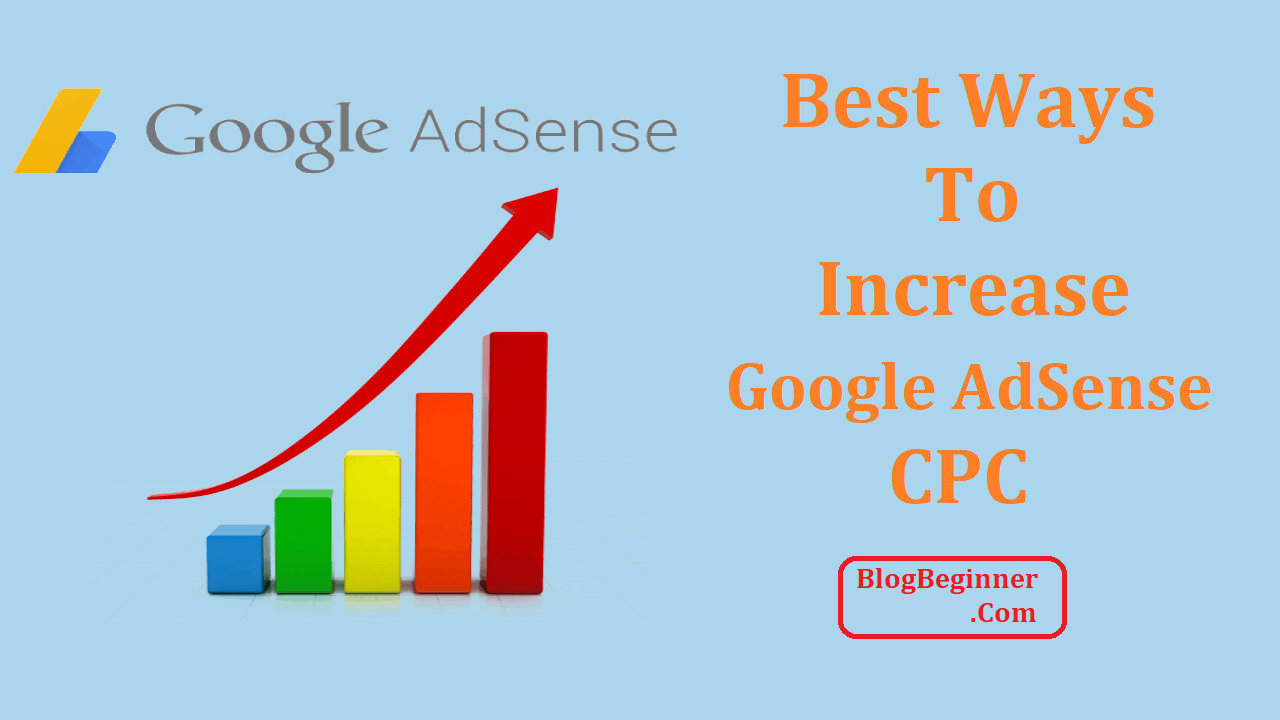
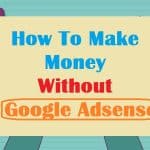
![How To Increase Google Adsense Earning & CPC [Method Inside] How To Increase Google Adsense Earning And CPC](https://www.blogbeginner.com/wp-content/uploads/2019/01/How-To-Increase-Google-Adsense-Earning-And-CPC-150x150.png)
